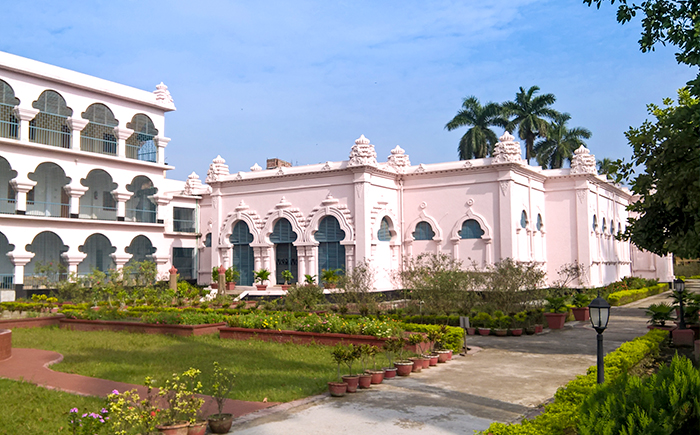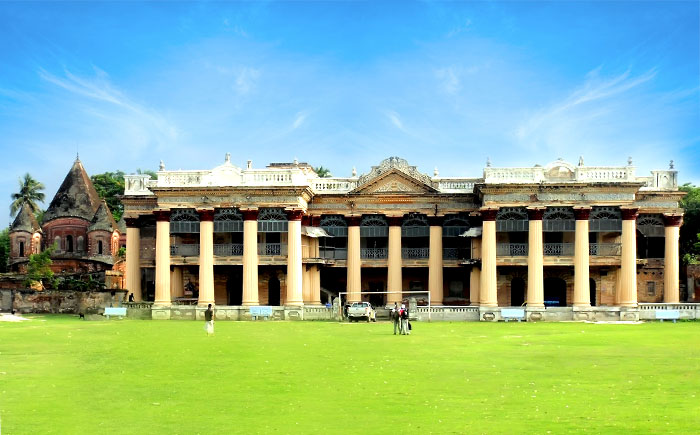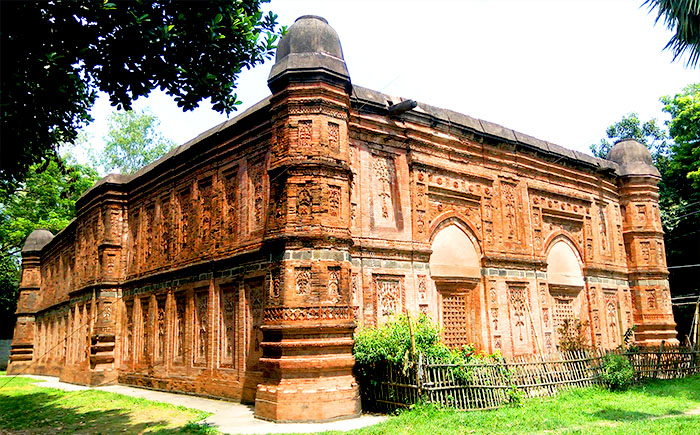
The Varendra Research Museum, is a museum, research center, and a prevalent tourist attraction located in the core of Rajshahi city. It is maintained by the Rajshahi University. It is one of the oldest museum with significant historical connotation and is also a heritage site of Bangladesh. The Varendra Museum is one of the largest archeological sites in South Asia. The museum was initially used as an investigation society named as Varendra Anushandan Samiti or Varendra Investigation Society and is where the current named originated from. Sarat Kumar Roy, lawyer Akshay Kumar Maitra and Ramprasad Chandra, formed the Varendra Search Committee for the collection and preservation of traditional objet d'art. Well ahead, in 1913, the Varendra Research Museum started its journey in its own building.
The existence of the Varendra Research Museum has been at stake at many circumstances. From 1949 to 1971, half of the Varendra Museum was sectioned as a medical school. When it was about to shut the doors again, Rajshahi University took charge of the museum.
Varendra Research Museum’s structural arrangement is of load-bearing brick wall. The upper row of the verandah is furnished with terracotta molded inscriptions from Paharpur. The linear quadrangular building has two major functions: Administration and the Library. It also has a Residential Block for officers and staff with a narrow number of administrators and the director. A large beautiful garden in front of the director's residence with large old trees all around the ground. The Museum is well maintained with Gas, Water, Electricity facilities and also has Internet, Postal, Cable and Phone Services.The museum is well surrounded by main establishes such that to the north of the museum is the Hatem Khan big Mosque and to the south is a hospital Jadhughor mor, Choto kutir, Boro kutir and Padma river. To the east is Rajshahi Govt. Hospital, Shaheb bazar road and Rajshahi Railway and the west has residential zone, shops.
The Rajshahi University authorities and the Rajshahi District Administration was successful in convincing the provincial government to allocate the museum to the university and the formal transfer took place on 10 October 1964. The university assumed full financial responsibility of the museum.
The Varendra Research Museum owns more than 9,000 artifacts rare specimens. The museum has masterpiece collections of Indus civilization, archeology of Mohenjo-daro civilization, stone statues, Buddha statuettes built in the eleventh century, head of Bhairab, Ganga figures, silver coins of Mughal period, round gold coins of Gupta emperor Chandragupta, emperor Shahjahan. Moreover, Prince Sharat Kumar Ray, donated their personal collections to Varendra Museum. The prince led a party to collect rare specimens around Bengal area and preserve in the museum. His party was able to collect 32 pieces of sculptures including the life-size images of Chandi from Mandoil, 64 pieces of sculpture and three terracotta Manasa-ghatas in the initial try. In further expedition, their collection increases. The precious collections went to 760 stone sculptures, 47 metal sculptures, 2 wooden sculptures, 4 clay sculptures, 4 cannons, 211 carved bricks, 42 molded plaques from terracotta, 29 glazed tiles, 17 stone inscriptions, 23 terracotta inscriptions, 4 paper documents, 101 ritual metal utensils, 10 pieces of ornaments, 434 gold coins and 4 garments. Also Mughal portraits and assorted sculptures in stone and bronze, antiquities from Nalanda, Bihar and other parts of India were brought and preserved at the museum.
There are Buddhist, Hindu stone sculptures and modern wood sculptures. Among the Hindu sculptures are images of Surya, Shiva, Ganesha and Visnu, including his incarnatory forms, rare images of the Shaktas of Durga-Gauri-Uma-Parvati, the Matrikas and Chamunda. Images of Buddha, Bodhisattavas, Taras, Jaina Tirthankaras and minor gods and goddesses of Hinduism are very well preserved in the museum. Arabic, Persian, Sanskrit and old Bangla stone inscriptions, sculptured stones from the Muslim period, miharab, and a pair of Sher Shah's Bronze cannons are also on display.
The museum’s library has a giant collection of books and periodicals, vital for enquiries and higher studies in primordial and medieval history, art and archaeology of Bengal. The number of Sanskrit manuscripts so far is 2,530 in number including 89 Puranas, 106 Smriti, 98 Grammar, 24 Lexicons, 71 Poetry, 10 Drama, 5 Rhetoric, 62 Vasisnava literature, 75 Vedanta, 37 Ayurveda. 37 Astrology, 2 History, 3 Buddhist literatures, 12 Miscellaneous. The museum library can currently present with 10,147 volumes of manuscripts. Indeed an enriched and proud library.
The Varendra Research Museum was visited many prominent personalities on various occasions. It is indeed a place to visit and witness the preserved, rare, antiques treasures of the past. The Varendra Research Museum is open from 10 am to 5 pm from Saturday to Wednesday. It is closed on Thursdays, Fridays and university holidays.





Leave your valuable comments: